ABC of Stains
ABC of Stains
-
A
-
Adhesives
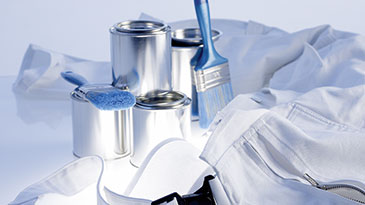
Adhesive soiling is best removed with nail polish remover (do not use it on synthetic fibres such as acetate). After removing the adhesive wash the item in the washing machine as instructed on the care label.
-
-
B
-
Baby food
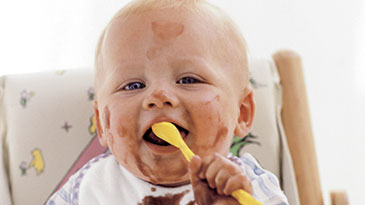
Don’t despair if mealtimes end up looking like a battlefield!
Soak the textiles for at least 2 hours in warm soapy water and then wash as recommended on the care label. -
Ballpoint pens
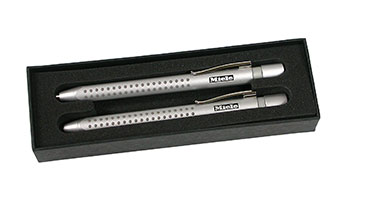
Look this kind of stain in the eye! You will need time and a mixture of vinegar and spirits for this trouble-maker. With white textiles add a little lemon juice.
Hairspray can also help:
liberally spray the textile and rub the stain off with a clean, dry cloth. With woollens you are better off with cologne or soap spirits. The stain will disappear if you then wash the item as normal. Special stain removers for ball point pen are also available from retails outlets. -
Beer
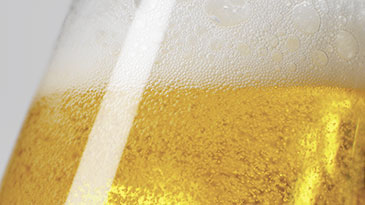
Fresh beer stains, caused by hops and malt, usually disappear by simply rinsing the item in warm water. Dried on beer stains should be treated with warm, dilute vinegar before washing. For very stubborn stains, soak in vinegar, then dab on some glycerine and wash in the usual way. The beer stain often disappears completely after the first wash. Mineral water is also as effective against beer stains as it is against hangovers.
-
Bitters
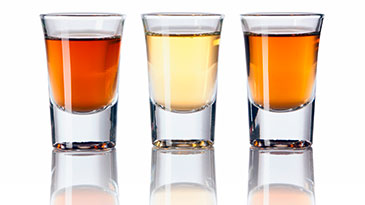
Before the digestif reaches your stomach, eliminate its traces in the same way as with a liqueur stain, i.e. first with alcohol and then with warm soapsuds.
-
Blood
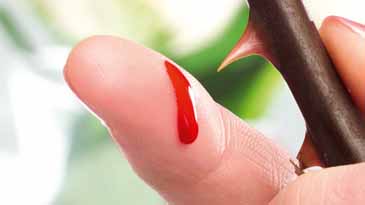
At the first sign of blood, try the following first aid remedy. Rinse immediately under cold running water, and then soak in a solution of salty water. Dried on blood stains should be soaked in a solution of ammonia before being washed.
Tip: Miele washing machines with the “Stains” option know what this stain is and will get rid of it for you! -
Blueberries
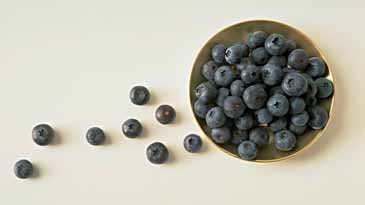
Soak the stain in fresh lemon juice, then wash in the usual way.
Tip: Miele washing machines with the “Stains” option know what this stain is and will get rid of it for you! -
Butter

Butter is a convenient stain remover. It is easy to wash out, and can even be used to help remove stubborn grease, tar and resin stains. Spread some butter over the stain Leave for a while to take effect. The grease, tar or resin should then be easy to scrape off.Dab the stain with spirits or use an aerosol stain remover containing benzene and wash in the usual way.
-
-
C
-
Car oil
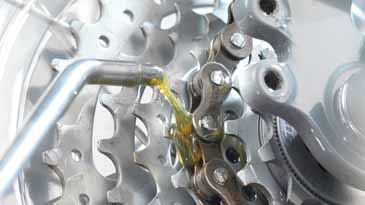
First place absorbent material under the fabric. Treat the stain with alcohol and then with turpentine. After working in, use a dabbing brush on the stain. Repeat this procedure using turpentine until no more oil flows into the material below. Apply liquid detergent and water to the spot and dab off the stain carefully. You should then rinse the fabric well and wash it in a washing machine using heavy-duty detergent. Repeat the procedure for severe stains.
Tip: Miele washing machines with the “Stains” option know what this stain is and will get rid of it for you! -
Cherries
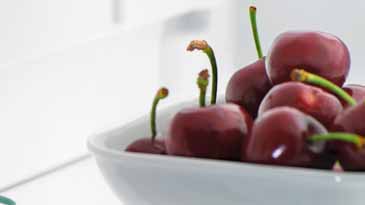
Soak cherry stains in freshly squeezed lemon juice. Or bleach them out using a liquid bleach for coloureds and with detergent with stain remover for whites.
Tip: Miele washing machines with the “Stains” option know what this stain is and will get rid of it for you! -
Chewing gum
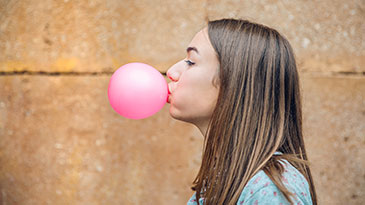
Garments with chewing gum on them should be placed in the freezer until it hardens. Or apply ice in to the gum to harden it. Afterwards. the gum can be scraped or cracked off. Treat residual stains with a little alcohol or an aerosol pre-treatment product before laundering.
-
Chocolate
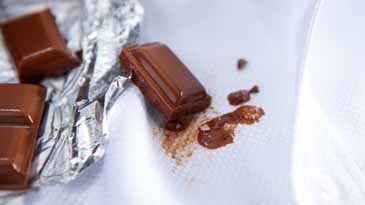
When sweet temptation turns into a nightmare, start by carefully scraping the chocolate off with a knife. Mix some alcohol or glycerine with an egg yolk, apply it to the stain and leave it take effect for a short while. Then rinse in cold water before washing in hot soapy water.
Tip: Miele washing machines with the “Stains” option know what this stain is and will get rid of it for you! -
Cocoa
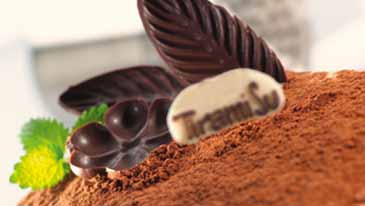
Cocoa is made using milk, and stains need to be treated as for milk by rinsing first in cold and then in hot water. It is important to do it in this order, as otherwise the stain will be harder to wash out. Then soak in salty water before washing. If the stain is still visible, dab with unsalted boiled potato water. A quick remedy is to apply liquid detergent directly onto the stain and allow it to soak for approx. 25 minutes.
Tip: Miele washing machines with the “Stains” option know what this stain is and will get rid of it for you! -
Coffee
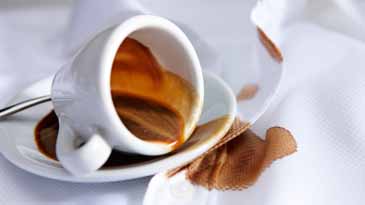
If there was milk in the coffee, then first dab the spot with cold water. Then treat with warm glycerine and wash out in warm water. Fresh black coffee spills should be washed straight away in warm soapy water. For old dried-on black coffee, add some salt to the soapy water, then dab the stain with a mixture of glycerine and egg yolk. Leave for 30 minutes before rinsing first in cold water and then in lukewarm water. Coffee stains can easily be bleached with colour-fast, liquid bleach for colour fabrics and with stain remover for whites.
Tip: Miele washing machines with the “Stains” option know what this stain is and will get rid of it for you! -
Cognac

Before you get too tipsy, sponge off any spillages with warm water, then wash using a liquid detergent.
-
Cola
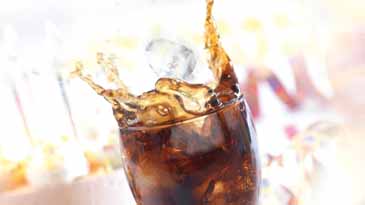
Fresh stains usually come out when washed. For old, dried-on stains, treat the area with a detergent for delicates and then rinse with mineral water before washing in the usual way.
Tip: Miele washing machines with the “Stains” option know what this stain is and will get rid of it for you! -
Collar stain

A clean shirt collar is essential for the well-dressed professional. . There are special hand-wash detergents available in practical tubes which are ideal for treaqting this area, and which are also handy for travelling. Pre-treat with a heavy duty liquid detergent or a powder detergent paste prior to washing.
Tip: Miele washing machines with the “Stains” option know what this stain is and will get rid of it for you! -
Currant juice
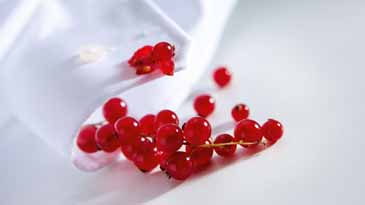
Redcurrant or blackcurrant stain usually just requires one wash to disappear. For stubborn stains, pre-treat with an enzyme based pre-soak product, or add stain removers to the detergent. Alternatively treat the stain with lemon juice, vinegar or salt before washing.
Tip: Miele washing machines with the “Stains” option know what this stain is and will get rid of it for you! -
Curry
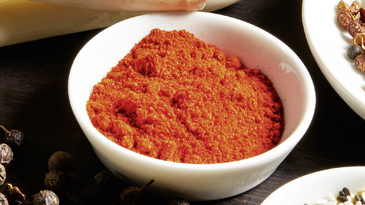
If not treated correctly, a dash of curry may well do untold damage. That is why you should first, soak in warm water. Then work in some glycerine or, for very fine or delicate fabrics, some eau de Cologne, spirits or alcohol. Curry stains can also be bleached out.
-
-
D
-
Deodorant
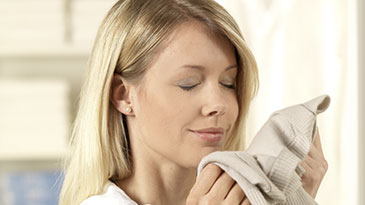
Don’t break out in a sweat if you get unwanted deodorant stains on your clothing. Treat with a 5% solution of citric acid before washing.
-
-
E
-
Egg yolk
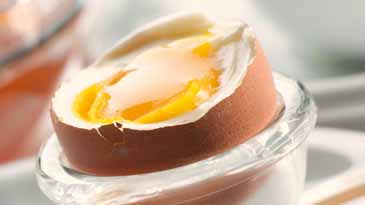
An egg stain should not be rubbed, but salted. Once dried the stain can then be brushed off, and spot-dabbed with cold water. If the stain is still visible, dab with a solution of ammonia. Then wash in the usual way.
Tip: Miele washing machines with the “Stains” option know what this stain is and will get rid of it for you!
-
-
F
-
Felt-tip pen
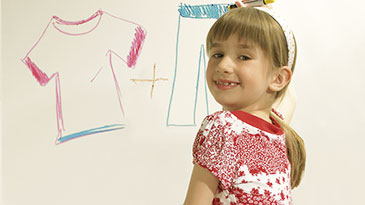
Like ballpoint pens, marks made by a felt tip pen are hard to eradicate as the colour is absorbed deep into the fabric. It may help to dab the stain several times with alcohol, turpentine or glycerine before washing.
-
Fruit
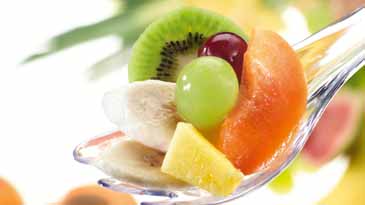
Fruit stains are not usually a problem if treated before washing with a stain remover. If the stain is still visible after washing, dab it with a little vinegar or lemon juice. Some fruit stains such as peach only really show up once they are washed, and these are particularly difficult to remove. Soaking old, dried-in fruit stains for several hours in buttermilk with a dash of lemon is often effective. solution of ammonia or spirit of soap usually does the trick on delicate fabrics. Fruit stains also respond well to bleaching. For coloureds use a liquid bleach (also for woollens and silks) which is suitable for use on coloureds. For whites add a powder stain remover to the detergent before washing.
Tip: Miele washing machines with the “Stains” option know what this stain is and will get rid of it for you! -
Fruit juice

Fruit stains are not usually a problem if treated before washing. First pour some mineral water on the stain and then wash the clothing as normal in the washing machine. For stubborn stains use a bit of liquid bleach directly on the stain
Tip: Miele washing machines with the “Stains” option know what this stain is and will get rid of it for you!
-
-
G
-
Grass
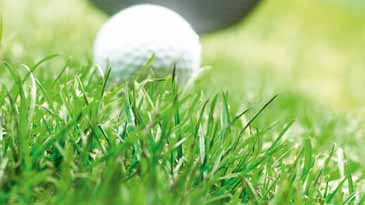
Green is the colour of hope, and you should not lose that when you have a grass stain. Do not let grass stains get wet, as this only makes it harder to get rid of them. Instead, apply some dilute ammonia or lemon juice to the area, and then wash at the hottest temperature possible for the fabric. An old home-made remedy helps against older grass stains. First soak the area in sour milk, and then rinse it with fresh milk. Flannel should be dabbed with a mixture of egg white and glycerine. Light-coloured summer clothing can be treated with alcohol. Bleach is a very effective remedy for lightening grass stains. Use a liquid bleach which is suitable for use on colouredfabrics, wool and silk. For whites add a powder stain remover to the detergent before washing.
Tip: Miele washing machines with the “Stains” option know what this stain is and will get rid of it for you! -
Grease stain
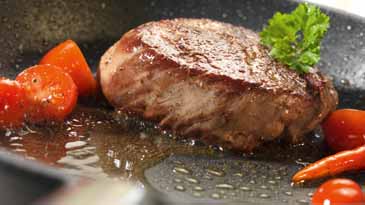
Most spots can be removed using washing up liquid or warm soapy water before being washed in the washing machine. We recommend using liquid detergent, which contains more surfactants than powder, making it more effective at removing grease. A more old-fashioned remedy is potato flour, which absorbs the fat so the stain can then be brushed off. If the stain is still visible, use soda crystals or a paste of detergent, and then wash at the hottest temperature possible for the fabric. Alcohol, liquid detergent and proprietary stain removers are also effective. Grease stains disappear as fast as they arrive if you treat them with an aerosol stain remover containing benzene. Then wash in the usual way using a liquid detergent. Stains on silk ties can be treated by applying a little talcum powder with the tip of a knife to the spot and leaving it to absorb the fat Remove it carefully later with a piece of cotton wool.
Tip: Miele washing machines with the “Stains” option know what this stain is and will get rid of it for you!
-
-
H
-
Honey
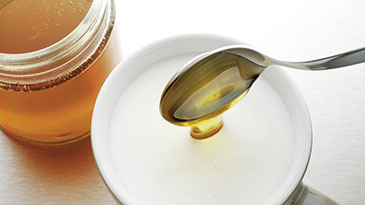
If the nectar of the bees soils your clothing, first dab the sticky spot with warm water. Then apply liquid detergent directly to the stain.
-
-
I
-
Ice cream
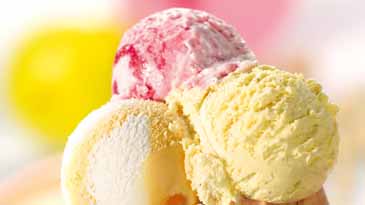
When this cooling summer treat melts and trickles down your clothesi t can leave an unpleasant trace. First dab the spot with a solution of ethyl alcohol and ammonia. Then wash in clear, lukewarm water.
-
Ink
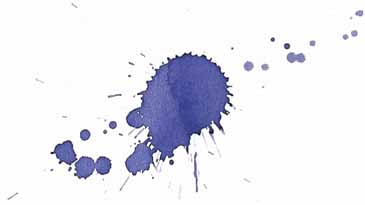
Denatured alcohol, lemon juice and proprietary stain removers are effective against ink stains. Vinegar or warm soapy water are alternatives, but care should be taken with these. Try them on a hidden part of the garment first.
-
-
J
-
Jam
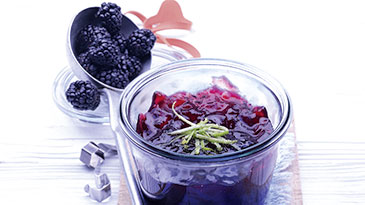
Warm water applied with a cloth is usually enough to remove most jam stains. For stubborn or heavy staining, treat as per strawberries, i.e. with soapy water or a little alcohol.
-
-
L
-
Lipstick
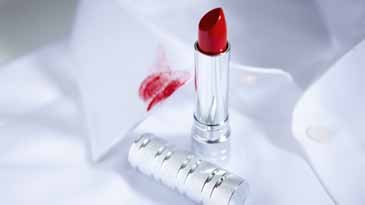
If you suddenly see red, don't panic. Lipstick is usually removed by one wash in the machine. To help dissolve the tell-tale traces of lipstick, dab with eucalyptus oil or glycerine before washing. Stubborn stains can be pre-soaked in a diluted solution of ammonia or removed by using an aerosol stain remover containing benzene.
Tip: Miele washing machines with the “Stains” option know what this stain is and will get rid of it for you! -
Liqueur

A liqueur stain responds well to a dash of high percentage alcohol! Dab stains with pure alcohol or diluted spirits. Wash in warm soapy water, and rinse in lukewarm water. Liqueur stains on woollens and silks also respond well to being washed in warm water.
-
-
M
-
Make-up
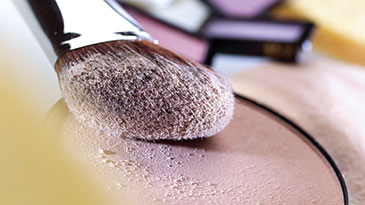
This type of soiling is relatively easy to remove from textiles. Make-up stains can be removed from light coloured items using alcohol or spirits as long as the fabric is robust enough for this treatment. With cotton, linen, viscose and woollens gall soap can help. Facial toner can also help. Follow up by washing the item in your washing machine.
Because make-up often contains fats, a pre-treatment for greasy stains will also help. -
Mayonnaise
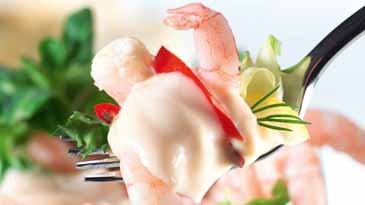
Mayonnaise can become a serious issue if not treated correctly. Remove the worst with a knife, and soak the area with warm water. Then dab glycerine on the stain, and wash in the usual way. If the stain is still visible, apply a diluted solution of ammonia.
Tip: Miele washing machines with the “Stains” option know what this stain is and will get rid of it for you! -
Milk
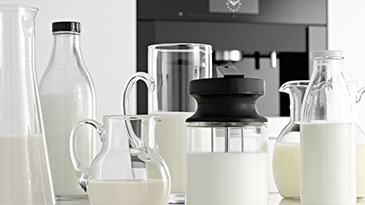
A drop of milk on clothing is easily dealt with if the stain is first treated with cold water before being rinsed out with hot water. Use lukewarm water for velvet and silk.
-
Mustard

Here's some advice that really cuts the mustard: first sponge with warm soapy water. If you can still see it, apply a solution of ammonia. It that doesn't work, try glycerine. Except on velvet and silk. You should only use eau de Cologne or a drop of spirits as per mayonnaise and curry stains. Mustard stains are also easily bleachable.
-
-
N
-
Nail polish
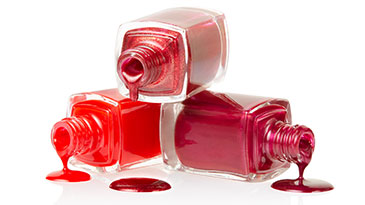
You can remove nail polish from clothing carefully using nail polish remover. Then wash in the usual way.
-
-
P
-
Paint stains
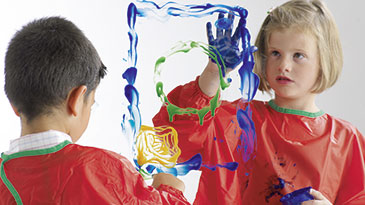
Paint on clothing is not a reason to panic. As long as you know what type of paint it is. Water soluble paint is best initially treated with curd or bile soap and then washed. Oil-based paint stains should first be treated with turpentine (paint brush cleaner) before washing. Turpentine can also be used for removing lacquer stains. Acrylic paint stains however require more fiercer measures. Mix spirits with a few drops of ammonia solution and dab the stain several times before washing.
-
Perfume
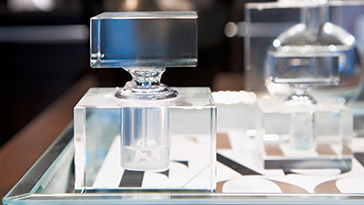
The alcohol used in the manufacturing process can cause perfume to vaporise onto clothing. This can affect the colours on silk fabrics. Perfume and deodorant stains can be pre-treated with a solution of citric acid (one part citric acid to 5 parts water). Then wash in the usual way.
-
-
R
-
Red wine

White wine helps with red wine stains. Sherry or clear alcohol can all be used to attack a red wine stain. However, the best remedy is simply a large pinch of salt. If possible you should rinse the stain out straight away. Before placing in the washing machine, soak the area with a dash of lemon juice. If the stain doesn’t vanish in the wash, try using glycerine. Don’t use salt or white wine on velvet or silk, as they only respond well to corn flour or potato flour. Dilute ammonia solution, cream of tartar or spirits can be used to tackle stubborn red wine stains. Bleach can also be used on red wine stains.
Tip: Miele washing machines with the “Stains” option know what this stain is and will get rid of it for you! -
Resin
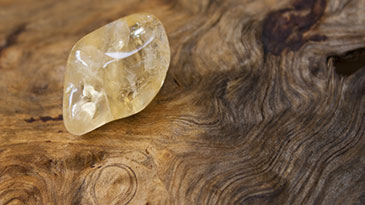
The best way of dealing with resin is to place the item in the freezer, Then scrape the resin off and treat any lingering stain with alcohol. Spirits, spirit of soap, turpentine or cream of tartar can help to get rid of the stain. Absorb residual moisture with blotting paper. Old dried on resin should be softened with butter to start with. The resin can then be scraped off carefully using the blade of a knife, and the remaining stain washed with spirit of soap.
-
Rust

Treating rust stains is time-consuming, and requires patience. Hard wearing, lightcoloured fabrics and woollens can be treated with lemon juice. However, you then have to rinse the fabric thoroughly. For dark, sensitive fabrics, first use spirit of soap , then lemon juice. Finally dab a bit of pure spirit on the spot. A simpler alternative is to use a proprietary rust remover for fabrics. It is vital that rust stains are removed as soon as possible, as leaving them for too long can cause permanent damage to the colours and fibres.
-
-
S
-
Scorch marks
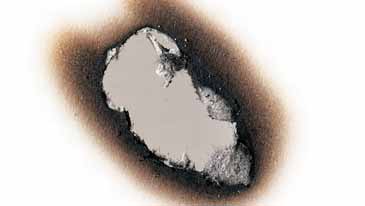
For scorch marks on clothing, soak area in a 10% solution of warm white vinegar. Some fabrics can then be bleached using hydrogen peroxide or chlorine (always test an inconspicuous area first).
-
Shoe polish
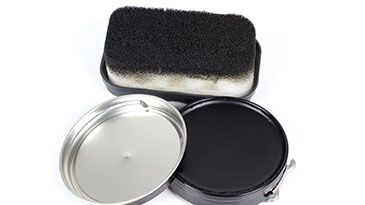
Shoe polish is essential for a well-heeled look – but not on your clothing! Alcohol helps remove it. Use neat alcohol on white fabrics, and a solution of 1 part alcohol to 2 parts water on coloureds. This type of stain also reacts well to liquid detergent or aerosol stain removers containing benzene. Then wash in the usual way using a liquid detergent. You can remove colour residues using a decolouriser. However, that is only possible for white cotton.
-
Skin cream

Oil based lotions and creams can be treated in the same way as butter, and then washed in warm soapy water. Any residual staining is best treated with a bleaching agent. Stain removers containing benzene are also effective in the removal of skin lotions and creams.
-
Soil
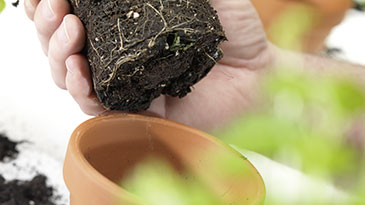
These stains are caused by iron oxide in the soil, which has settled in between the fibres. This type of pigment is not water soluble and needs mechanical action to remove it. Coarse soiling should be very carefully brushed or vacuumed off first, or hosed off from the wrong side with water. It is advisable to soak the textiles in the washing machine. This subjects the laundry to regular movement and helps to swell the fibres, making it easier for the fine particles of soiling to disperse. Stains caused by soil should always be removed as soon as possible as otherwise, just like with rust stains, they will cause discolouration and damage the fibres.
-
Soot

If you rub in a soot stain, the soot only embeds itself more deeply into the fabric, making it harder to wash out. Try shaking it off first, and then sprinkle some potato flour or sawdust over the soot. Alternatively, salt can be used on white fabrics that can be washed at high temperatures. If you still cannot shake the soot out, try using a little alcohol on the spot. Aerosol stain removers can also be very effective at removing soot.
-
Spinach
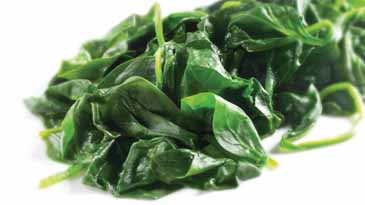
Fresh potatoes go well with spinach. To put it more precisely: Rub the stain with a piece of raw potato, and then wash in soapy water.
Tip: Miele washing machines with the “Stains” option know what this stain is and will get rid of it for you! -
Strawberries
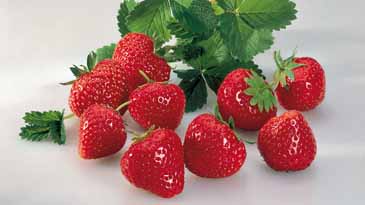
Garments with strawberry stains on them should first be soaked in warm soapy water. For stubborn stains, use a liquid bleach.
Tip: Miele washing machines with the “Stains” option know what this stain is and will get rid of it for you! -
Street dust
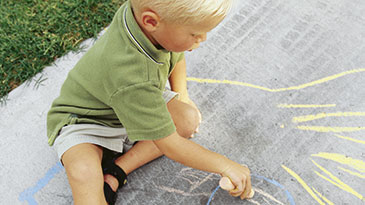
Street dust can simply be brushed from clothes using a soft clothes brush. Damping the brush with a little water or spirits first can help remove the dirt.
-
Sugar
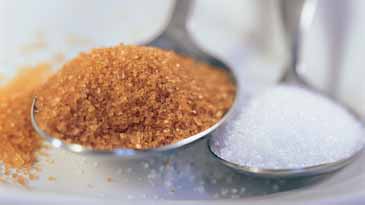
Sugar is easy to remove from fabric. That is, provided that you act quickly. Simply wash the item in hot water as soon as you can. For coloured sugar, adding a few drops of lemon juice to the water will help remove stains.
-
Sweat stains
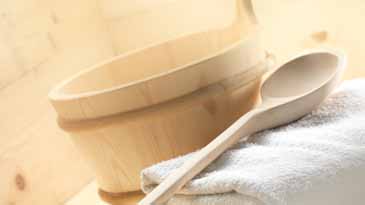
The signs of hard work are only too obvious on light-coloured fabrics. Soak sweat stained clothes in lukewarm water containing white vinegar. Then wash in the usual way.
Tip: Miele washing machines with the “Stains” option know what this stain is and will get rid of it for you!
-
-
T
-
Tar

First, smear with butter to loosen the tar. Then carefully scrape off any coarse residues from the fabric. Then treat the mark with a little alcohol or use an aerosol stain remover containing benzene. Place a thick wad of kitchen paper under the fabric to absorb the tar residues. Another approach is to use a hot iron. Place the tar marked fabric between two sheets of blotting paper, and before ironing.
-
Tea
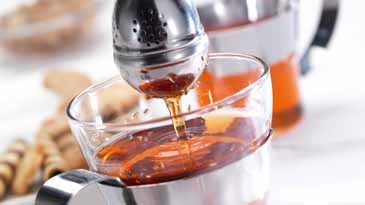
If you still have warm water, then use a little to sponge off any tea stains. A heavy duty liquid detergent can also be used to help remove the stain. Caution: with coloured fabrics, test on a hidden piece of fabric first. Treat stubborn stains with a mixture of glycerine and egg yolk for approx. 1 hour before rinsing and washing as normal.
Tip: Miele washing machines with the “Stains” option know what this stain is and will get rid of it for you! -
Tomato Sauce
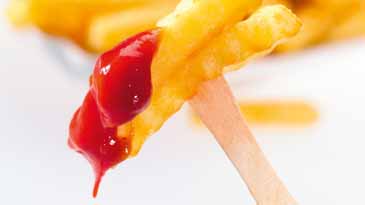
Tomato Sauce should be washed out as soon as possible in warm soapy water or with water containing a little ammonia. Alternatively, treat the area first with a liquid detergent for delicates, and then wash in the usual way. Tomato Sauce can also be bleached easily like curry or mustard.
-
Toothpaste
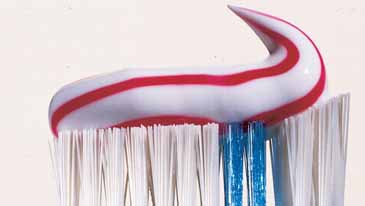
You remove toothpaste from clothing in the same way as from your teeth: first rinse the toothpaste off thoroughly using warm water. Then wash the garment at as high a temperature as possible for the fabric.
-
-
U
-
Unknown stains
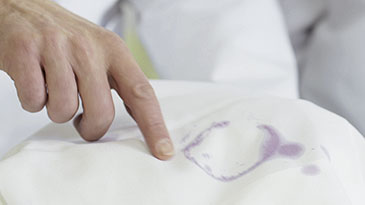
Be very careful when treating unidentified stains. To start with you need to find out what the fabric is made of. Egg yolk works wonders on washable, coloured fabrics. After treating the stain, rinse with cold water. White, starched fabrics should be dabbed with eau de Cologne or spirits. Then treat with a solution of ammonia and bile soap, and leave to soak overnight if necessary. For wool, use cornmeal, potato flour or vinegar and potato starch. Heat these ingredients in water, and then moisten the stain. Once dried, the stain can simply be brushed away. Use a piece of clean linen soaked in vinegar to wipe stains from velvet. Then wash in clean water.
-
Urine
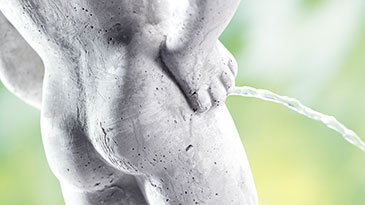
The same applies to urine as to other stains: start by getting as much fluid out of the fabric as possible without making the stain any larger. A layer of salt or a little lemon juice can help here. Pat dry with paper towel and then rinse the garment with clean, cold water and then hand it over to the washing machine to deal with the rest.
We recommend using a detergent that contains a bleaching agent as long as this doesn’t affect the material or the colour of the fabric.
-
-
V
-
Vegetables

Fresh vegetable stains can normally be wiped off with a cloth and some cold water. Tomato and spinach stains are more of a problem. First, rub with a slice of raw potato, and then wash in warm soapy water. If the vegetables have been prepared with fat, flour or cream, treat the stain a little liquid detergent before washing. Vegetable stains usually disappear without a problem when treated with bleach or stain removers.
Tip: Miele washing machines with the “Stains” option know what this stain is and will get rid of it for you!
-
-
W
-
Wax

The unfortunate effects of dripping wax can easily be ironed away! With non-coloured wax you should first scrape off any coarse residues very carefully. Then place the item between two sheets of blotting paper or paper towel, and iron at a low temperature with the wrong side of the fabric uppermost. Change the blotting paper or paper towel frequently. With coloured wax, place the item in the freezer for a short while, and then carefully scrape off as much as the wax as you can. If the stain is still visible, treat as for grease.
-
White wine

hite wine stains should not be left for too long before treating them. The best remedy is to wash the spillage off with hot water straight away. If this isn’t practical apply a generous amount of salt to the area to soak up the worst of the spillage. This is also effective for red wine.
-

